What has been uncovered so far will make it possible to write — and rewrite — some pages of the basilica’s history. For instance, before it was a church property, the land was used as a quarry and for farming.
“We have identified the presence of at least two definite species — olive and grapevine. This confirms what it says in some passages of the Gospels,” Stasolla told CNA.
“The various discoveries emerging as the work progresses will enable us to describe architecturally something that was not known before. They will also help us understand the intermediate periods — such as between the early Christian and medieval phases, and between the medieval and modern phases, about which we know very little,” said Stasolla, who explained that this is due to a lack of sources (especially during periods of reduced pilgrimages) or when accounts are less descriptive.
The edicule continues to amaze
From June 19–27, the area in front of the edicule and the edicule itself (the structure raised over the place of Christ’s tomb) was closed to allow the removal of the floor and archaeological investigations.
(Story continues below)
 Map of the area in front of the Edicule at the Basilica of the Holy Sepulcher in Jerusalem. Credit: Archivio Università La Sapienza, Roma
Map of the area in front of the Edicule at the Basilica of the Holy Sepulcher in Jerusalem. Credit: Archivio Università La Sapienza, Roma
Seven days and nights of uninterrupted work revealed the funerary area in the same area of the edicule and, in particular, the first “monumentalization” of the edicule in the early Christian period. (“Monumentalizing” is a term used to describe commemorating or immortalizing something with a monument.)
In fact, according to Stasolla, what the team of archaeologists discovered was a “double monumentalization,” which they didn’t expect because it occurred at a very close temporal distance.
“We were able to document an initial phase of monumentalization from the beginning of the fourth century and a second phase from the end of the fourth century,” Stasolla said, which she explained was confirmed by the discovery of a coin deposit, with the last emissions being those of Emperor Valens.
“In the first phase, there were three marble steps leading to the venerated tomb, which we found. In the second phase, there were only two steps because the floor was partially raised,” she added.
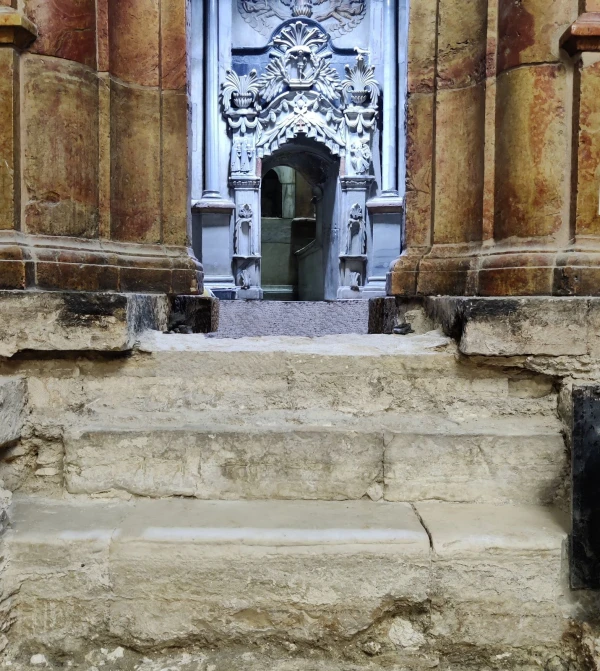 The marble steps -- Monumentalization of the edicule in the early Christian period. Photo credit: Archivio Università La Sapienza
The marble steps -- Monumentalization of the edicule in the early Christian period. Photo credit: Archivio Università La Sapienza
These discoveries align with the oldest iconography from the fifth century and the description by the famous pilgrim Egeria, whose diary is one of the most important early sources on early Christianity. Egeria is believed to have arrived in Jerusalem a few years after the conclusion of the second phase of monumentalization, sometime between 381 and 384 A.D.
A statement from the Custody of the Holy Land said the restoration of the floor inside the edicule revealed “part of the bottom of a burial chamber similar to those found in the northern portion of the rotunda, filled in and arranged to encourage pilgrims to visit since the early Christian period.”
“In the edicule,” Stasolla specified, “the medieval floor covers a burial chamber. The monumentalization, already from the early Christian period, serves to monumentalize a tomb.”
In the antechamber, called the Chapel of the Angel, traces of the initial arrangement of the monument for liturgical purposes and remains of the sixth-century arrangement of the edicule were found, including inscriptions by pilgrims in Latin, Greek, and Armenian (18th century).
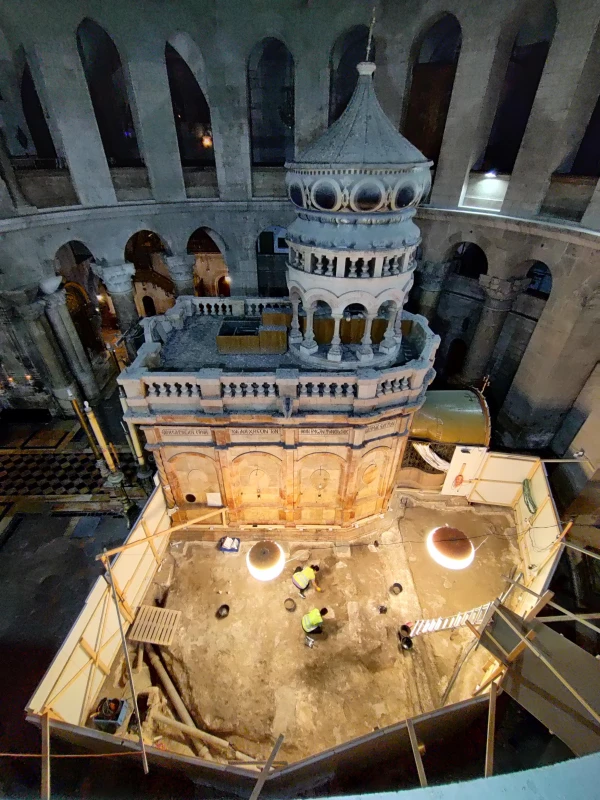 Excavations in the northern area of the rotunda, next to the Coptic Chapel, in the Basilica of the Holy Sepulcher. Credit: Archivio Università La Sapienza
Excavations in the northern area of the rotunda, next to the Coptic Chapel, in the Basilica of the Holy Sepulcher. Credit: Archivio Università La Sapienza
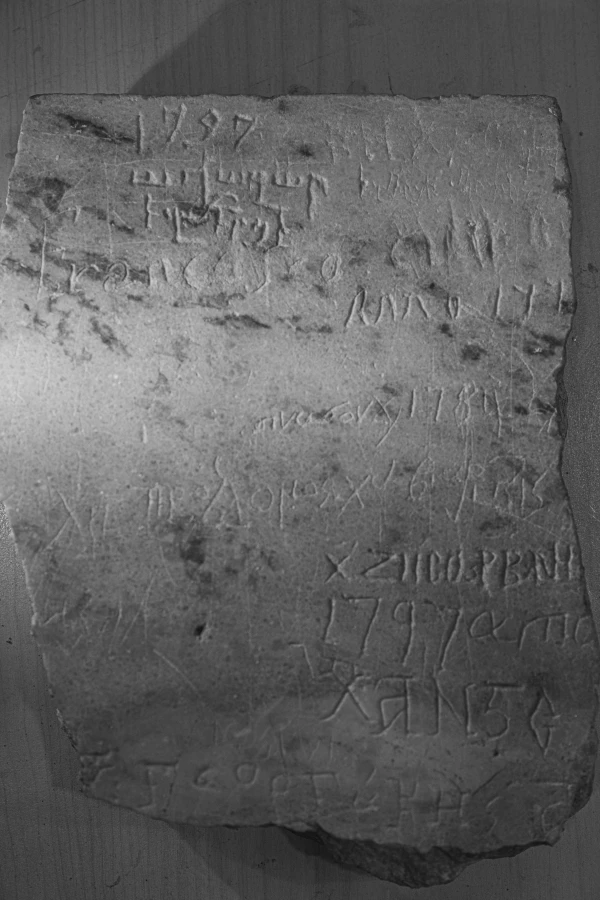 Inscriptions by pilgrims in Latin, Greek, and Armenian (18th century) uncovered during excavations at Basilica of Holy Sepulcher in Jerusalem. Credit: Gianfranco Pinto Ostuni
Inscriptions by pilgrims in Latin, Greek, and Armenian (18th century) uncovered during excavations at Basilica of Holy Sepulcher in Jerusalem. Credit: Gianfranco Pinto Ostuni
According to Stasolla, outside there was a large polished floor made from local stone and other materials, traces of which were found in the preparation mortar.
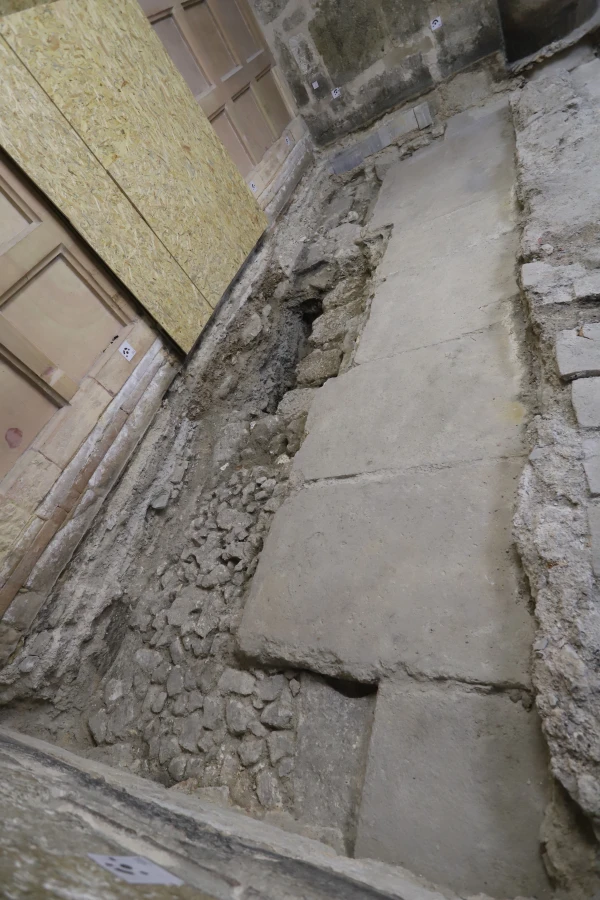 The floor of polished lithic slabs in front of the edicule in the Basilica of the Holy Sepulcher. Photo credit: Archivio Università La Sapienza
The floor of polished lithic slabs in front of the edicule in the Basilica of the Holy Sepulcher. Photo credit: Archivio Università La Sapienza
Other discoveries
During the first year of work, some interesting archaeological elements were discovered and reported in periodic updates signed by Stasolla and distributed by the Custody of the Holy Land. For instance, a recent update on July 7 focused on information related to excavation work in the area in front of the edicule of the Holy Sepulcher.
Strasolla highlighted other interesting discoveries. In the northern area of the ambulatory, remains of the early Christian liturgical basilica were found, already known from historical sources, which contributed to completing the plan of the early Christian complex.
A small portion of the apse had already been discovered under the Greeks’ Catholicon (the name given to cathedrals and monastery churches by the Greek-Orthodox), and in the chapel of St. Vartan.
“In the coming months, we will continue archaeological investigations in that area to complete the excavation of the apse,” Stazolla said.
Additionally, in the northern nave of the basilica, the excavations revealed the construction site of the Constantinian age, and the foundations of the northern perimeter wall of the complex commissioned by the first Christian emperor.
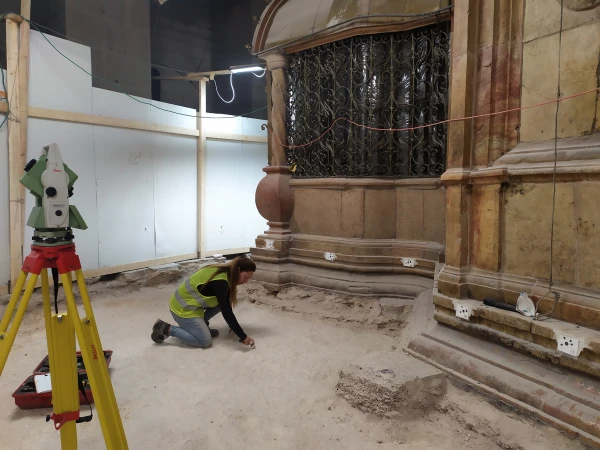 Excavations in the northwest area of the rotunda, next to the Coptic Chapel in the Basilica of the Holy Sepulcher. Credit: Archivio Università La Sapienza
Excavations in the northwest area of the rotunda, next to the Coptic Chapel in the Basilica of the Holy Sepulcher. Credit: Archivio Università La Sapienza
According to a Custody of the Holy Land press release, in the northwestern area of the Rotunda, next to the edicule, “a tunnel has been intercepted, partly already highlighted in previous investigations, which descends vertically next to the edicule for a depth of 2.80 meters [9.18 feet] and then continues horizontally to the north.” This is an important element in the study of architectural aspects of the basilica, especially in relation to excavation stratigraphy and its connection to the entire water drainage system.
The timeline
The excavation continues to proceed in a way that allows for the regular conduct of liturgical ceremonies and the flow of pilgrims.
“We have managed to close the northern half of the north nave, complete the entire rotunda, and half of the ambulatory,” Stasolla told CNA. “In these weeks, we are finishing the southeast area of the rotunda. We are adhering to the project timeline and expect to deliver the work on schedule.”
They hope to finish the work by the end of 2024.
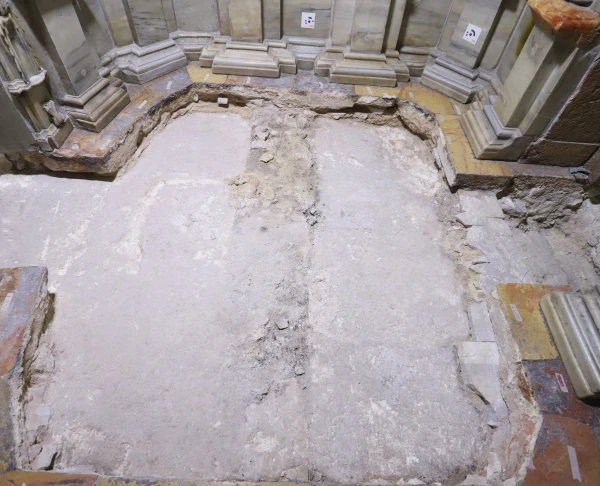 Some recent findings in the Chapel of the Angel in the Basilica of the Holy Sepulcher in Jerusalem. Credit: Archivio Università La Sapienza
Some recent findings in the Chapel of the Angel in the Basilica of the Holy Sepulcher in Jerusalem. Credit: Archivio Università La Sapienza
The excavation work is conducted continuously, day and night, and the processing of the materials uncovered is conducted in real time between Jerusalem and Rome. All the data processed during the excavation are entered into a database specifically created for the project and linked to various historical and archival sources.
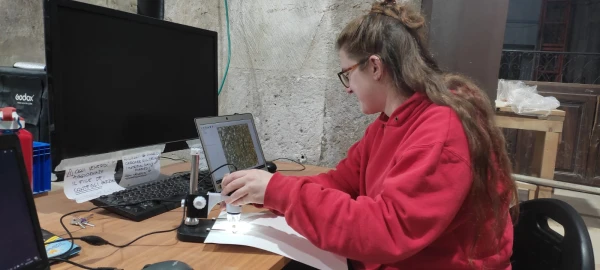 A worker in the laboratory in the "Gallery of the Latins" inside the Basilica of the Holy Sepulcher. Credit: Archivio Università La Sapienza
A worker in the laboratory in the "Gallery of the Latins" inside the Basilica of the Holy Sepulcher. Credit: Archivio Università La Sapienza
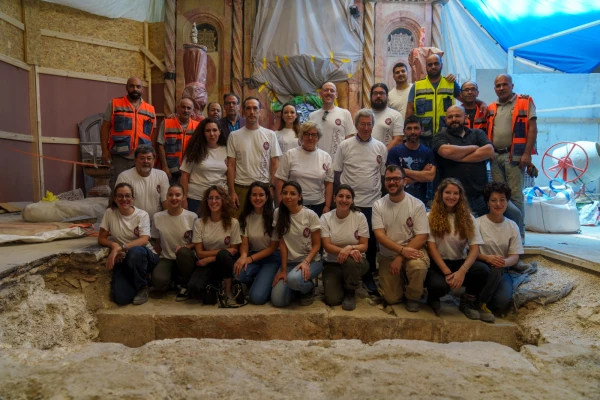 The team of La Sapienza University who are leading the excavation work at the Basilica of the Holy Sepulcher in Jerusalem. Credit: Gianfranco Pinto Ostuni
The team of La Sapienza University who are leading the excavation work at the Basilica of the Holy Sepulcher in Jerusalem. Credit: Gianfranco Pinto Ostuni


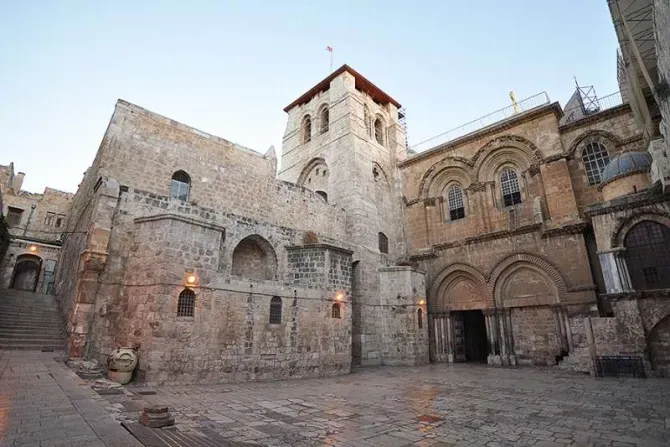
 Excavations in the northern area of the rotunda, next to the Coptic Chapel, at the Basilica of the Holy Sepulcher. Credit: Archivio Università La Sapienza
Excavations in the northern area of the rotunda, next to the Coptic Chapel, at the Basilica of the Holy Sepulcher. Credit: Archivio Università La Sapienza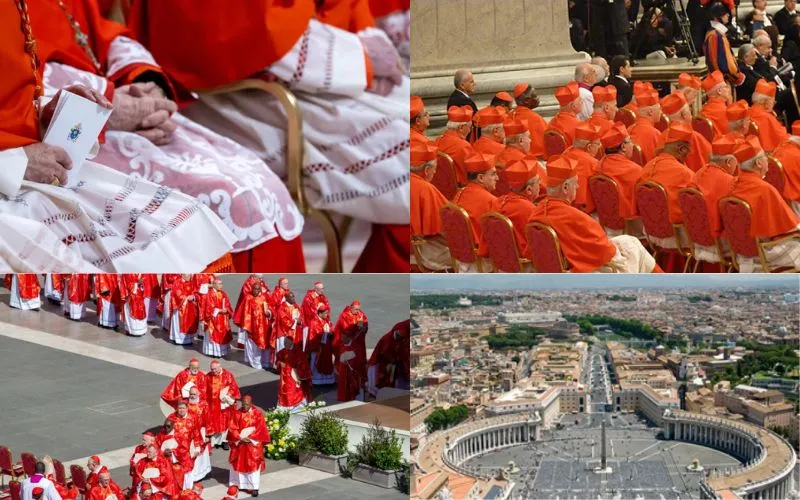
 Some recent findings in the Chapel of the Angel in the Basilica of the Holy Sepulcher in Jerusalem. Photo credit: Archivio Università La Sapienza
Some recent findings in the Chapel of the Angel in the Basilica of the Holy Sepulcher in Jerusalem. Photo credit: Archivio Università La Sapienza Map of the area in front of the Edicule at the Basilica of the Holy Sepulcher in Jerusalem. Credit: Archivio Università La Sapienza, Roma
Map of the area in front of the Edicule at the Basilica of the Holy Sepulcher in Jerusalem. Credit: Archivio Università La Sapienza, Roma The marble steps -- Monumentalization of the edicule in the early Christian period. Photo credit: Archivio Università La Sapienza
The marble steps -- Monumentalization of the edicule in the early Christian period. Photo credit: Archivio Università La Sapienza Inscriptions by pilgrims in Latin, Greek, and Armenian (18th century) uncovered during excavations at Basilica of Holy Sepulcher in Jerusalem. Credit: Gianfranco Pinto Ostuni
Inscriptions by pilgrims in Latin, Greek, and Armenian (18th century) uncovered during excavations at Basilica of Holy Sepulcher in Jerusalem. Credit: Gianfranco Pinto Ostuni The floor of polished lithic slabs in front of the edicule in the Basilica of the Holy Sepulcher. Photo credit: Archivio Università La Sapienza
The floor of polished lithic slabs in front of the edicule in the Basilica of the Holy Sepulcher. Photo credit: Archivio Università La Sapienza Excavations in the northwest area of the rotunda, next to the Coptic Chapel in the Basilica of the Holy Sepulcher. Credit: Archivio Università La Sapienza
Excavations in the northwest area of the rotunda, next to the Coptic Chapel in the Basilica of the Holy Sepulcher. Credit: Archivio Università La Sapienza A worker in the laboratory in the "Gallery of the Latins" inside the Basilica of the Holy Sepulcher. Credit: Archivio Università La Sapienza
A worker in the laboratory in the "Gallery of the Latins" inside the Basilica of the Holy Sepulcher. Credit: Archivio Università La Sapienza


